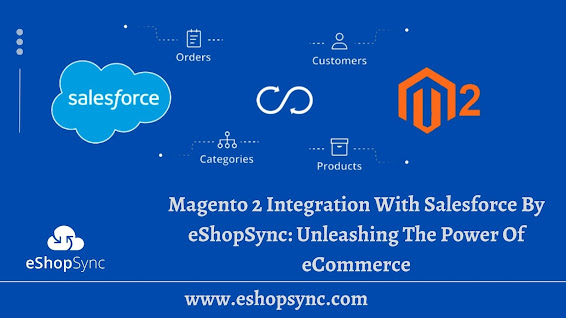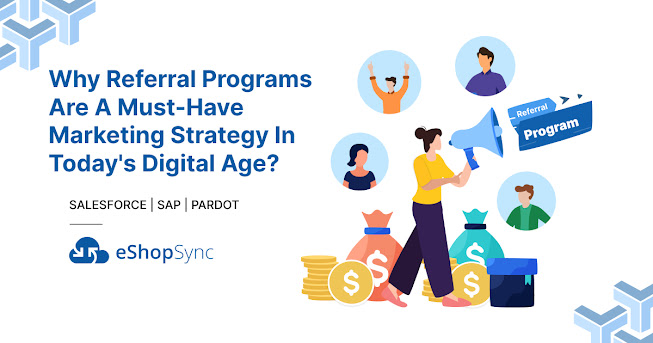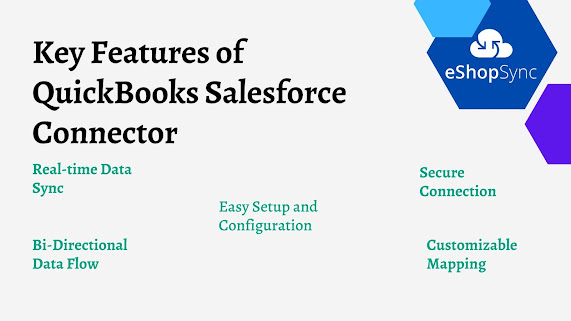Magento 2 Integration With Salesforce By eShopSync: Unleashing The Power Of eCommerce
Are you struggling to take your online store's performance to new heights?
Look no further!
In today's digital age, seamless integration is the key to success. And what better way to achieve it than by combining the power of Magento 2 and Salesforce? Get ready to witness a revolution in your e-commerce business as we unveil the secrets of boosting your online store's performance with this dynamic duo.
From enhancing customer experience to streamlining operations, get ready for an exhilarating journey filled with game-changing strategies and insights that will catapult your business into a whole new realm of success. So buckle up, because we're about to embark on an incredible adventure towards achieving unparalleled growth and profitability!
Steps For Magento 2 Salesforce Integration
Magento 2 integration with Salesforce helps boost your online store's performance in several ways. With the help of integration, you can streamline data entry and management, automate tasks, and improve customer service.
The first step to integrating Magento 2 with Salesforce is to install the Magento 2 Salesforce Connector from eShopSync. It will allow you to connect your Magento 2 instance with your Salesforce account.
Once the extension is installed, you'll need to configure it. The configuration process is relatively simple and only requires a few clicks. After the extension is configured, you'll be able to start using it immediately.
One of the great things about the Magento Salesforce CRM integration is that it allows you to sync data between the two platforms automatically. You won't have to manually sync data between Magento 2 and Salesforce anymore. The data got synchronized on a real-time basis automatically.
In addition to automatic data synchronization, the Magento Salesforce Connector also allows you to create custom fields in Salesforce for your Magento products. This can be extremely helpful if you want to track specific product information in Salesforce.
You can also refer to the user guide of Magento 2 Salesforce integration for a detailed process.
If you're looking for a way to boost your online store's performance, then consider Magento 2 integration with Salesforce. The process is relatively simple and can provide many benefits for your business.
Key Considerations Of Magento Salesforce CRM Integration
Magento 2 is one of the most popular eCommerce platforms in the world. Salesforce is a leading CRM platform. When you integrate Magento 2 with Salesforce, you can get the best of both worlds - a powerful eCommerce platform and a world-class CRM system.
However, there are some key considerations that you need to keep in mind while integrating Magento 2 with Salesforce. Let's take a look at some of them:
Data Migration: One of the biggest challenges while integrating Magento 2 with Salesforce is data migration. You need to migrate all your data from Magento 2 to Salesforce. This includes products, customers, orders, etc.
Synchronization: Another challenge is synchronization between Magento 2 and Salesforce. Once the data is migrated, you need to ensure that it is synchronized between the two platforms. This includes keeping the data updated in both systems as well as ensuring that the same data is not duplicated in either system.
Security: As both Magento 2 and Salesforce are mission-critical systems for your business, security is a major concern while integrating them. You need to make sure that all data is secure and encrypted while it is being transferred between the two systems.
Support: While Magento 2 and Salesforce offer great support on their own, you need to make sure that you have adequate support in place for your specific integration project. This includes making sure that you have the right people in place to help with any technical issues that come up during the integration process.
Automation: Integrating Magento 2 with Salesforce can be a complex and time-consuming process. To make it easier, you can automate some of the tasks involved. This includes automating data synchronization between the two systems as well as setting up automatic email notifications for orders, customers, etc.
Integrating Magento 2 with Salesforce is a great way to get the best of both worlds - a powerful eCommerce platform and a world-class CRM system. However, there are some key considerations that you need to keep in mind while doing so. By following these tips and keeping these key considerations in mind, you can ensure that your integration project is successful.
Best Practices for Setting Up Your Online Store After the Integration
The integration of Magento and Salesforce that is provided by eShopSync is a great way to boost your online store's performance. However, there are some best practices that you should follow to ensure seamless integration and avoid any potential issues.
Here are some of the best practices for setting up your online store after the integration:
Make sure that all of your products are properly imported into Salesforce. This includes ensuring that all product information, such as pricing, descriptions, and images, is accurate and up-to-date.
Set up your shipping and payment methods in Salesforce. This will ensure that orders placed through your online store are processed correctly and without any delays.
Test your online store thoroughly before making it live to the public. This includes placing test orders and verifying that they are processed correctly.
Once your online store is live, monitor it closely for any issues or problems. This will help you quickly resolve any issues that may arise and keep your customers happy.
Troubleshooting Common Issues During the Integration Process
If you're experiencing any issues during the Magento 2 Salesforce integration process, you can do a few things to troubleshoot and resolve them.
First, check to make sure that all of the necessary credentials and settings are entered correctly. This includes your Salesforce username, password, security token, and API key. If any of these are incorrect, the integration will not work properly.
Next, check your Magento and Salesforce configurations to ensure that they're compatible. If you're using different versions of either platform or if your settings aren't configured properly, this can cause issues with the integration.
Conclusion
Beyond streamlining the customer experience, Magento 2 Salesforce Integration also helps businesses gain valuable insights into customer activity and preferences. With this data, merchants can better target their audiences, providing them with personalized offers and recommendations that will increase their loyalty and satisfaction.
Furthermore, Magento 2’s integrated analytics allow merchants to track performance in real time, helping them identify areas of improvement and adjust strategies accordingly. All of these features make Magento 2 Salesforce Integration a powerful tool for any online store hoping to maximize success.
If you're still having trouble, reach out to our Salesforce Consultant Team for help. We'll be happy to assist you in resolving any issues you're experiencing.
Ref: https://rb.gy/iq459



Comments
Post a Comment